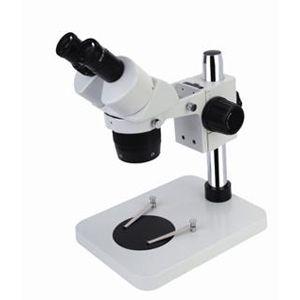Here's why knowing how to choose the right stereo microscope is crucial for your work:
l Optimized Observations: Stereo microscopes provide magnified 3D views of objects, but not all models are created equal. Choosing the right one ensures your observations are clear, informative, and suited to your specific needs. The appropriate magnification, working distance, and illumination will allow you to see the fine details of your samples effectively.
l Efficiency and Comfort: Using the wrong stereo microscope can lead to frustration and inefficiency. For instance, a microscope with insufficient magnification might force you to strain your eyes to see the details you need. Similarly, a microscope with an awkward working distance might limit your ability to manipulate your samples comfortably. Choosing the right model ensures a comfortable and efficient workflow.
l Accuracy of Analysis: In some applications, like dissecting small organisms or manipulating delicate parts, precision is key. The right stereo microscope will provide the necessary resolution and depth perception to perform these tasks accurately. An inappropriate model might limit your ability to distinguish fine details or make precise manipulations.
l Application-Specific Features: Stereo microscopes come with various features like zoom ranges, different eyepiece options, and specialized illumination techniques. Understanding your needs allows you to choose a microscope with features that enhance your specific application. For example, if you're working with electronics, features like coaxial illumination might be helpful for better visibility under soldering points.
l Cost-Effectiveness: Stereo microscopes can range significantly in price. Knowing how to choose the right one ensures you get the features and capabilities you need without spending money on unnecessary extras. For instance, if your work primarily involves basic observation, a simpler model might suffice compared to a research-grade microscope with advanced features.

